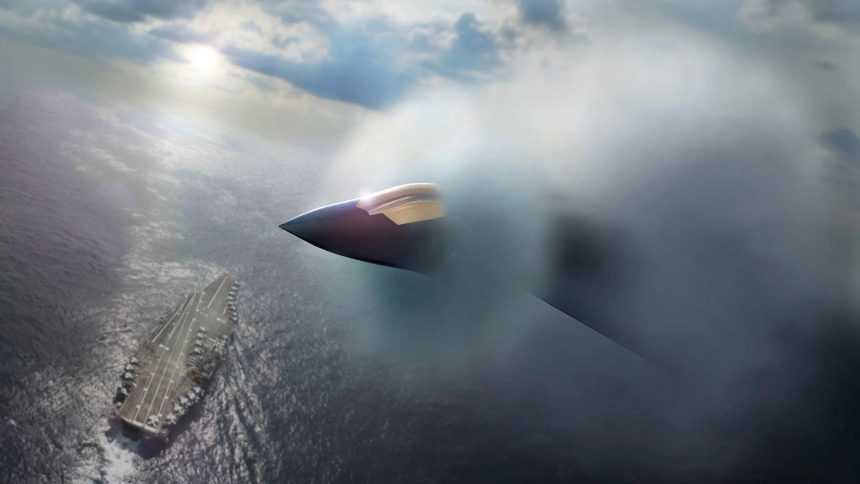Fresh artwork of Boeing’s proposed sixth-generation naval fighter shows similarities to the F-47, the new Air Force fighter.
Boeing has released a new rendering of its proposed F/A-XX sixth-generation fighter for the U.S. Navy, providing a glimpse into the company’s vision for the service’s future carrier-based aircraft. The artwork was provided by Boeing, after being revealed at the Tailhook Symposium last week and later published by Aviation Week. We reached out to Boeing for additional information.
The image depicts a sleek, cloud-shrouded aircraft operating above an aircraft carrier. While many details remain deliberately obscured, the image highlights features that suggest strong similarities with Boeing’s other project, the F-47, winner of the U.S. Air Force’s Next Generation Air Dominance (NGAD) program.
The rendering is the latest sign of Boeing’s effort to demonstrate its ability to compete in both the Air Force and Navy’s next-generation tactical aircraft programs, despite ongoing budgetary and industrial base concerns. Also, this could be considered as a response to previous “industrial base concerns of two sixth-generation programs occurring simultaneously,” as mentioned in a White House statement in July.
Similarities to the F-47
The new F/A-XX concept bears a striking resemblance to Boeing’s previously released F-47 renderings. In particular, the cockpit canopy shape appears nearly identical, although it is accompanied by a smaller, narrower radome compared to the Air Force jet, which could represent an adaptation for carrier-based requirements to improve visibility while flying at high angles of attack during carrier landings.
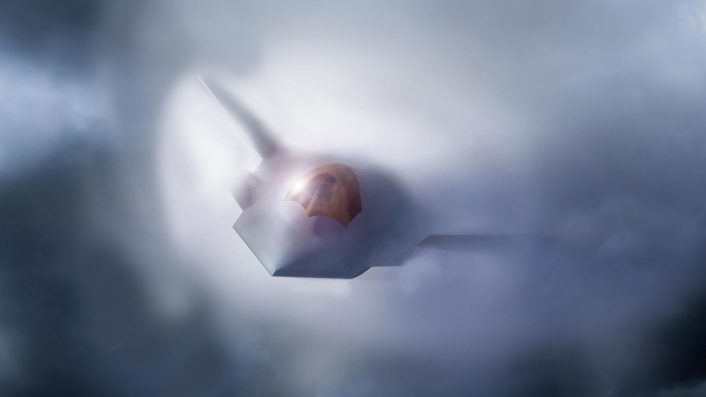
Notably, the artwork once again obscures potential canards and wingtips with clouds, continuing the trend of concealing details that might reveal too much about Boeing’s design approach. As with the F-47, the tail is not visible, raising the possibility of a tailless configuration aimed at maximizing stealth.
While the use of canards surprised many observers when they first appeared in F-47 renderings, with debates about the possible degradation of the low observability, their potential role in the F/A-XX is not to be underestimated. The choice to use canards could allow an improvement of low-speed handling, which is particularly important during carrier approaches and landings, although at this stage it is still difficult to make assumptions because of the little details available.
Diverging Design Requirements
Despite visual similarities, the two programs are not expected to produce identical aircraft. The Air Force’s F-47 will rely on an all-new adaptive engine, the focus of the Next Generation Adaptive Propulsion (NGAP) program, and is designed for long-range missions, boasting a combat radius of more than 1,000 nautical miles and speeds in excess of Mach 2.
According to Aviation Week, the Navy’s F/A-XX, in contrast, is expected to use a derivative powerplant, reflecting the service’s different operational requirements and logistical considerations. Navy leaders have stated in the past that the F/A-XX will prioritize range – targeting an increase of about 25% over current carrier-based strike fighters – along with survivability in contested environments.
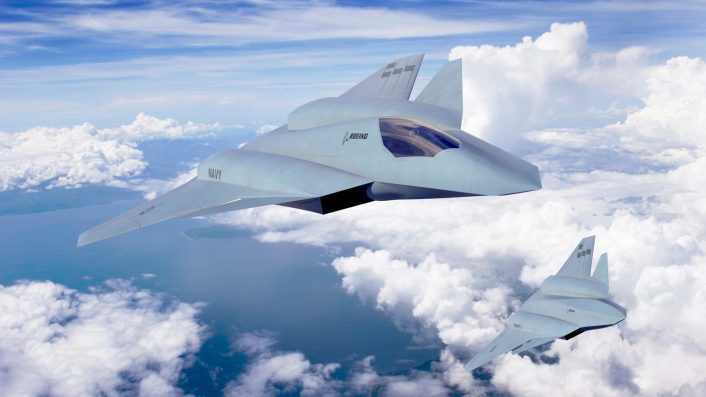
This divergence alone reflects the broader differences between Air Force and Navy priorities: while the Air Force emphasizes penetrating long-range missions across the Pacific, the Navy requires a balanced approach that accounts for carrier integration, sortie generation, and durability in demanding maritime conditions.
Competitive Landscape
Boeing’s release comes at a time of heightened competition. Just few weeks before, Northrop Grumman unveiled its own F/A-XX rendering, showing a sleek, tailless design that emphasizes stealth with flowing surfaces which many considered reminiscent of the YF-23. The appearance of competing concepts underscores the fact that both companies are positioning themselves to secure what would be a critical program for the Navy’s future Carrier Air Wings.
The F/A-XX program itself, however, remains in limbo. As Aviation Week reports, the Pentagon’s Fiscal Year 2026 budget request called for pausing the program, allocating only limited funds to complete preliminary design work while prioritizing the Air Force’s F-47. The decision reflected concerns from defense officials about the industrial base’s ability to simultaneously produce two advanced sixth-generation fighters, as mentioned earlier.
Still, Navy leaders have expressed urgency in pressing forward. Adm. Daryl Caudle, the newly installed Chief of Naval Operations, recently stressed the need for a next-generation carrier-based fighter to maintain the service’s ability to project power in high-threat environments. Similarly, Vice Adm. Daniel Cheever, the Commander of Naval Air Forces, has said he is “eagerly awaiting” a down-select decision for the program, despite the current uncertainty.
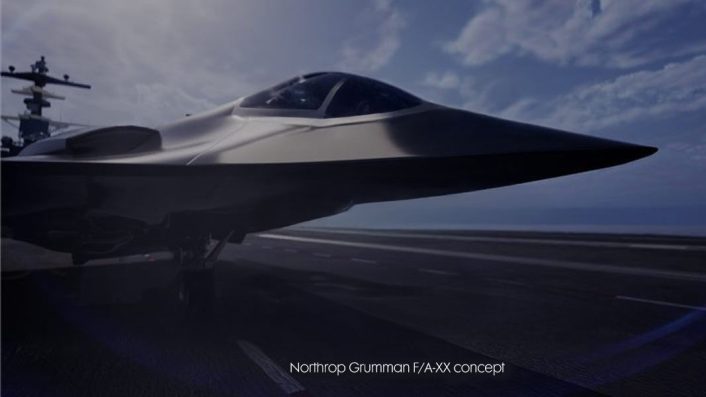
Boeing’s Industrial Strategy
Boeing has sought to allay concerns about production capacity. Company executives argue that their industrial strategy is designed to handle both programs. In June, Boeing Defense and Space CEO Steve Parker emphasized that pursuing both the Air Force and Navy contracts was part of a deliberate plan, not an unexpected challenge.
To support this ambition, Boeing has invested roughly $2 billion in new facilities dedicated to advanced combat aircraft programs. This includes the Advanced Combat Aircraft Assembly Facility in St. Louis, now under construction, which could produce both the F-47 and F/A-XX if the company secures contracts.
Strategic Stakes for the Navy
For the Navy, the F/A-XX represents more than just a new fighter. It is central to the long-term viability of carrier air wings in an era of increasingly capable adversaries. China’s growing arsenal of long-range missiles and advanced fighters presents a particular challenge, making extended range, survivability, and networking essential features for future U.S. naval aviation.
Many have advocated for the F/A-XX program, arguing that, if it continues to stall, it could put the Navy in a very difficult position in a high-end confrontation in the Pacific. “It is critical that we field that capability as quickly as possible to give our warfighters the capabilities they need to win against a myriad of emerging threats,” Caudle said in a testimony for his Senate Armed Services Committee confirmation hearing.
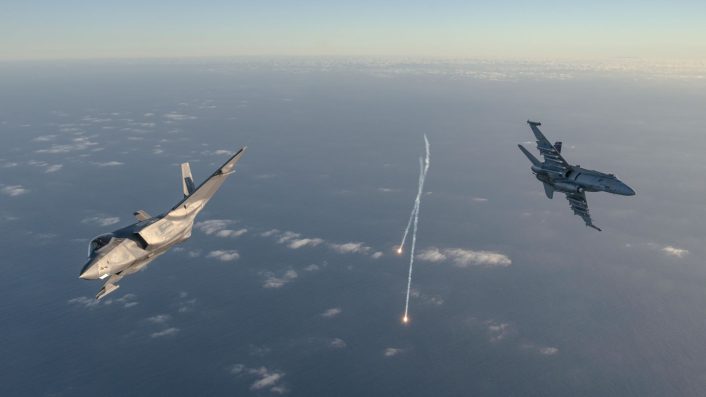
“If you have air superiority, then you have sea control. Those things go together,” Cheever said to Aviation Week. “So, you need that fourth-, fifth-, sixth-generation mix. And as fourth-generation comes down in numbers, then you need that … fifth-, sixth-generation mix. And I think the Navy’s done it well with the fourth-, fifth-, sixth-generation mix of what’s coming.”

